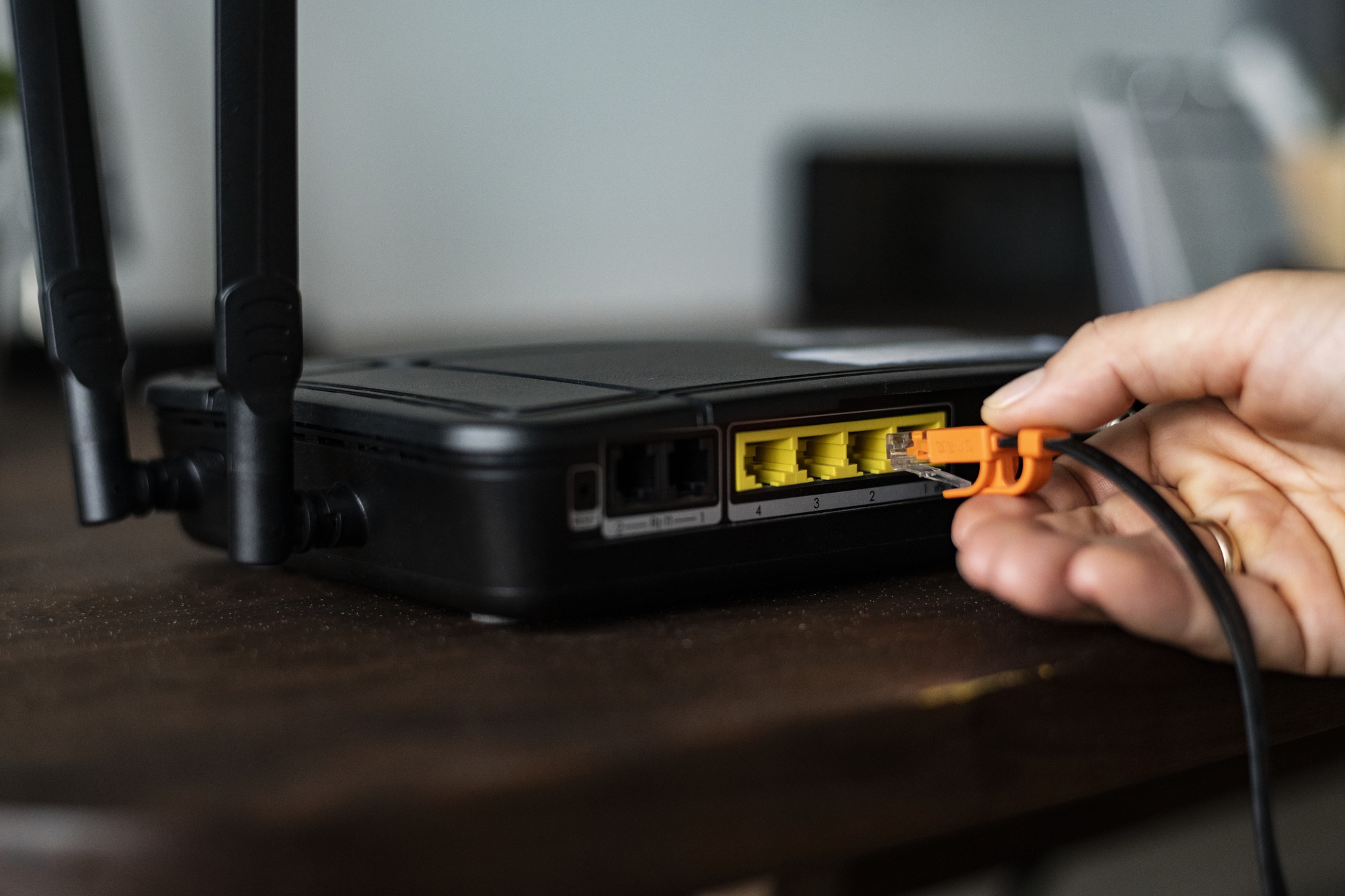The One Touch Switch (OTS) system is a new, consumer-friendly process designed to make switching broadband providers in the UK simpler and faster.
Overseen by the One Touch Switching Company (TOTSCo), the system enables seamless communication between broadband providers. As a customer looking to switch, all you have to do is contact the new provider. This provider manages the entire switch, coordinating directly with the customer’s current provider, so the consumer doesn’t need to navigate the technical complexities of the switch.
Here’s how the OTS system works in practice:
Switching Steps Under One Touch Switch (OTS)
- Customer Places New Order: The customer initiates service with a new broadband provider, providing key details such as their name, address, and account information with the current provider.
- Switch Request Submitted: The new provider uses the TOTSCo platform to initiate the switch, notifying the current provider.
- Account Matching: The current provider verifies the customer’s information to confirm account details and checks for any existing switches in progress.
- Service Details Shared: Once the account is confirmed, the current provider shares necessary service information with the new provider.
- Impact of Switching: The current provider sends the customer a summary of any potential impacts, such as Early Termination Fees or loss of additional services like email or TV.
- Customer Approval: The customer reviews and consents to the switching impact information.
- Order Processing: The new provider confirms the switch date, logs the customer’s consent, and places necessary wholesale orders.
- Voice Porting (if needed): Voice porting requests are processed where applicable.
- Service Migration: Wholesale migrations are completed as scheduled.
- Switch Confirmation: The new provider notifies the old provider of the switch completion.
- Account Closure: The previous provider closes the customer’s old account and related services.
The new OTS system, which launched on 12 September 2024, aims to simplify broadband migration. It also helps to promote market competition by making it easier for consumers to switch without hassle.
While the system has been widely welcomed, some industry members have raised concerns regarding security protocols and certain operational challenges.
What Happens After the OTS Process?
The rest of your broadband switch process will follow the same familiar steps as before. Ahead of your activation date, you may receive a Wi-Fi router in the post, which you’ll simply plug in on the specified day. If an engineer visit is required, they may bring the equipment with them on installation day.
With the One Touch Switch system, not much will feel different for you. This update is simply there to make switching to any provider, even one using a different network, smoother and more straightforward.
Are There Any Downsides to One Touch Switching?
While the One Touch Switching (OTS) system in the UK is designed to make broadband switching easier, there are some potential downsides and risks to consider:
- Security Concerns: OTS requires sharing customer details between the new and current providers to manage the switch. Some industry professionals have expressed concerns that the streamlined data-sharing process could increase the risk of personal data breaches if providers do not implement robust security measures.
- Switching Errors: The success of OTS depends on accurate information from both providers, and errors in account details could result in failed or delayed switches. For example, if customer data isn’t matched correctly, users may face disruptions as providers attempt to troubleshoot these mismatches.
- Early Termination Charges: While the OTS process may reduce switching barriers, customers could still face early termination fees if they are mid-contract. The convenience of OTS doesn’t eliminate these charges, so customers still need to confirm their contract status before switching.
- Potential for Service Downtime: Although OTS is designed to make switching seamless, there could still be short downtimes during the transition. If one provider doesn’t release service on time, or if the handover process experiences a delay, customers could experience a brief loss of connectivity.
- Inflexibility with Custom Deals: If customers have special discounts or deals with their current provider, these may not be transferable. The OTS process focuses on the technical aspects of switching but doesn’t account for specific contract details, which customers may lose when switching providers.
- Limited Provider Compatibility: Not all broadband providers and network types are part of OTS initially. This means customers who want to switch to or from certain providers that aren’t yet compatible with the system might face additional complexity or even find that OTS is not available to them.
While One Touch Switching aims to simplify broadband switching, you should weigh these factors and check your contract terms before initiating a switch.
Our experts can help you decide what the next best move for you is, depending on your current deal.
Which Suppliers Offer The One Touch Switch Process?
More suppliers are now offering One-Touch-Switching, which highlights exactly how popular the process is – and how important it is to have efficient and speedy mobility between all brands.
Here’s a quick overview of the main networks involved in this new process:
- Openreach (Part-Fibre): According to ISPReview, Openreach covers around 97% of UK homes and supports major providers like BT, Sky, Plusnet, TalkTalk, EE, Vodafone, and NOW Broadband.
- Openreach (Full-Fibre): Reaching roughly 50% of UK households (according to Openreach, this equates to 12.5 million homes) with providers like BT, Sky, Plusnet, TalkTalk, Vodafone, and Cuckoo.
- Virgin Media (Cable and Full Fibre): Available to about 53% of homes, offering broadband solely via Virgin Media.
- CityFibre (Full-Fibre): Covers around 12%, available through providers like Vodafone, TalkTalk, Cuckoo, Zen, Yayzi, and toob. According to CityFibre, this equates to 3.8 million homes.
- Hyperoptic (Full-Fibre): Available in around 4% of homes, exclusively through Hyperoptic. As of July 2024, Hyperoptic supplies full fibre broadband to 340,000 homes.
This process is meant to make switching seamless, no matter the network you’re moving to, opening up more choices for UK broadband customers across various infrastructures.
Speak to our experts or use our free deal checking tool to see which suppliers are available in your area.

